MARDI / TUESDAY – 20
La formation des marionnettistes selon les diverses avenues esthétiques des productions actuelles/The training of puppeteers according to the various aesthetic avenues of current productions
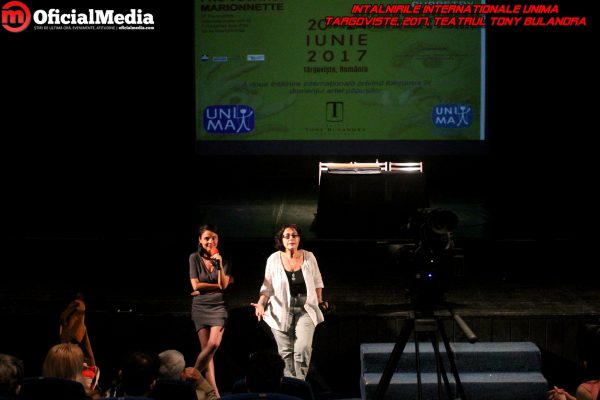
16h/16h20 – Ouverture/Opening:
Mihai Constantin RANIN (directeur général du théâtre Tony Bulandra/general Director of the Tony Bulandra Theatre, Irina NICULESCU et Tito LOREFICE
16h20/16h30 – Présentation d’une courte forme/Presentation of a short puppetry form:
ONE WING
Invitée/guest: Ana Crăciun-LAMBRU
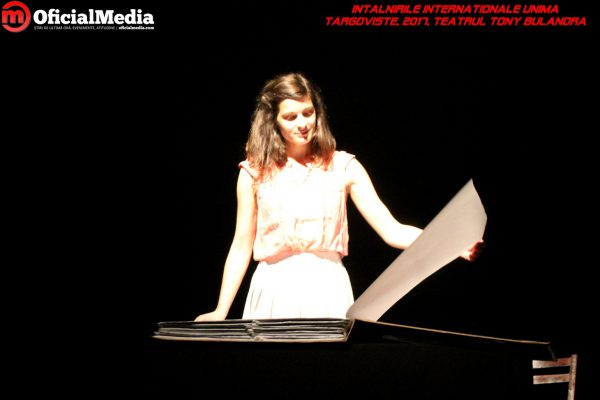
16h30/16h45 – Présentation de la Rencontre Internationale/Presentation of the meeting:
Marthe ADAM et Paulo BALARDIM
16h45/18h – Rencontre amicale/ Informal gathering
Modératrice/Moderator: Marthe ADAM
- La formation aux arts de la marionnette dans le cadre de la compagnie Arkétal/Training in the arts of puppetry as part of the Arkétal Company
Invitée/guest: Greta BRUGGEMAN
The Atelier Arketal, a center for training and research in the arts of puppetry, was born in 2002 from a desire to transmit and share as well as the need to make a space of research and creation. This place, unique in the South-East of France, is aimed at theatre professionals and at people engaged on the professional paths who need to enrich themselves with this practice. It promotes the discovery and the initiation into contemporary fine arts and theatre expression.
Beyond the transmission of techniques, the Atelier Arketal aims to be a meeting place open to the adventure of creation, to sharing knowledge between the participants in the workshops and to sharing artistic experiences.
L’Atelier d’Arketal, centre de formation et de recherche aux arts de la marionnette est né en 2002 d’un désir de transmission et de partage aussi bien que de la nécessité de faire vivre un espace de recherche et de création. Ce lieu-ressource, unique dans le Sud-Est de la France, est à destination des professionnels du spectacle et des personnes engagées sur les chemins professionnels qui ont besoin de s’enrichir de cette pratique. Il favorise la découverte et l’initiation à l’expression plastique et dramatique contemporaine.
Au-delà de la transmission des techniques, l’Atelier d’Arketal se veut un lieu de rencontre ouvert à l’aventure créative, à la mise en commun des savoirs entre les participants aux stages et au partage d’expériences artistiques.
- La formation aux arts de la marionnette dans le cadre de la compagnie KatKatha/Training in the arts of puppetry as part of the KatKatha Company
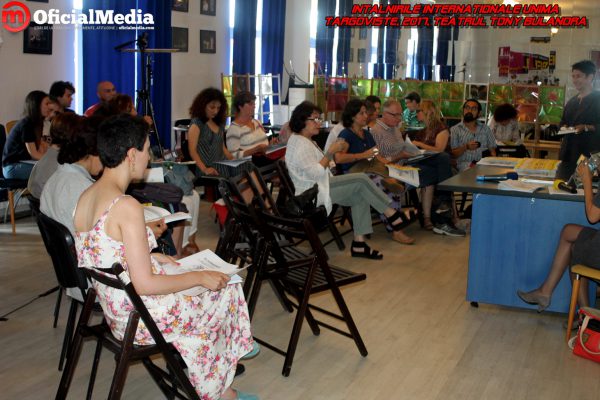
Invitée/guest: Anurupa ROY
Katkatha is a New Delhi based puppet theatre group, which began working in 1998. In these years the membership of the group has been overhauled completely three times. The humble beginnings of the group, its struggle to create a puppet theatre audience, to find its own form of expression, to generate enough work and money for itself through the year is a testimonial of the survival strategies of puppet theatre in India in the last 20 years. The presentation will talk briefly of this journey, the shift from an individual director’s vision to the multi disciplinary training approach and the creation of an ensemble. Lastly, also the inclusion in this entire process of a dialogue and training with traditional forms and with traditional puppeteers. Our learnings are the core of most of the trainings, internships, and apprenticeships we run to train other puppeteers.
Katkatha est une compagnie de théâtre de marionnettes située à New Delhi et fondée en 1998. Depuis sa création, la compagnie a renouvelé la composition de ses membres trois fois. L’humble situation économique du groupe, sa lutte pour engendrer et maintenir un public et pour trouver ses propres styles d’expression, pour produire assez de travail et d’argent pour tous, sont des témoignages probants des stratégies de survie du théâtre de marionnettes en Inde, depuis une vingtaine d’années. Je vous présente brièvement ce périple ainsi que le décalage vécu entre les processus de formation orientés vers la mise en scène traditionnelle et la création interdisciplinaire. Aussi, je parlerai du dialogue que nous poursuivons avec les formes traditionnelles et les marionnettistes de style traditionnel. Nos formations sont basées sur l’internat dans les compagnies et sur l’apprentissage au cœur des troupes existantes.
- Expression, connexion et mouvement dans le théâtre de marionnette/Expression, connection and movement in Puppetry
Invités/guests: Karen HØIE et Svein GUNDERSEN
A short presentation of the workshop “Expression, connection and movement in Puppetry”, arranged in co-operation between the Academy of Performing arts in Bratislava, department of Puppetry and Kulturproduksjoner, Norway, in January 2017. Movement artist and actor Hilde Veronika Høie was in charge of the workshop, assisted by director Svein Gundersen, both from Kulturproduksjoner. Ida Hledikova was project leader for the workshop on Slovakian side, Karen Høie on Norwegian side. Participants consisted of students from the Academy of Performing arts in Bratislava, and from Oslo and Akershus University College of Applied Sciences. The workshop was a part of the project “HraMoKa”.
Ceci est une brève présentation du stage intitulé : « Expression, relation et mouvement au théâtre de marionnettes ». Le stage a été mis sur pied grâce à une collaboration entre l’ Academy of performing arts à Bratislava et le Département de Puppetry and Kulturproduksjoner, en Norvège, en janvier 2017. L’actrice et spécialiste du mouvement, Hilde Veronika Hoie, assistée du metteur en scène Svein Gundersen ont dirigé le stage. Ida hledikova a organisé le projet en Slovénie et Karen Hoie, en Norvège. Les participants étaient issus de l’Academy of performing arts de Bratislava et de l’Akershus University College of Applied Science, à Oslo. Le stage faisait partie du projet « HraMoKa ».
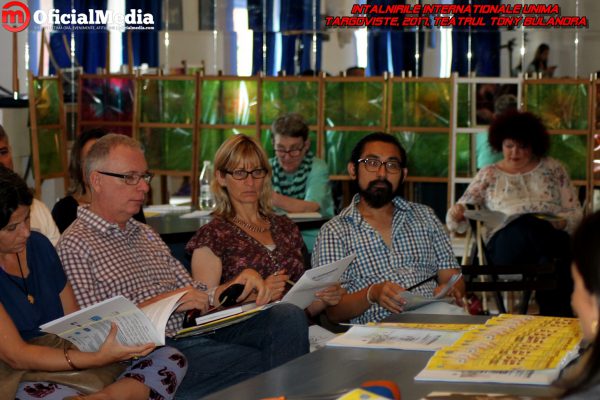
18h/19h30 – Repas/Dinner
19h30/20h15 – Conférence 1:
Les transformations de la marionnette/Tranformations of the puppet
Invitée/guest: Kateřina DOLENSKÁ
Kateřina Lešková Dolenská speaks about the crucial change in the Czech puppetry that has happened at the end of the 20th century. Puppet theatre has opened to the influences of drama theatre, music theatre, “new circus”, physical theatre, dance, mime, etc., and it seems that sometimes it has lost its own spirit and essence. Nowadays we are facing performances with puppets and objects (props) more than a real puppet theatre. The puppet itself is now considered to be something old-fashioned, boring, and definitely not inspirational. The man, who is mainly responsible for this situation is paradoxically the world famous director Josef Krofta. He changed not only the name, but also the attitude and the way of thinking about puppetry at the Academy of Performing Arts in Prague. What are the results of his decision to open the former puppetry department to alternative theatre is obvious now, almost 25 years after that.
Kateřina Lešková Dolenská parle de l’évolution décisive de la marionnette tchèque qui est intervenue à la fin du 20ème siècle. Le théâtre de marionnettes s’est ouvert aux influences du théâtre dramatique, du théâtre musical, du «nouveau cirque», du théâtre physique, de la danse, du mime … et il semble que parfois cette forme artistique ait même perdu son caractère propre et sa nature. De nos jours, nous sommes confrontés à des spectacles avec des marionnettes et des objets (accessoires) plutôt qu’à un véritable théâtre de marionnettes. La marionnette elle-même est maintenant considérée comme quelque chose d’ancien, d’ennuyeux et de peu inspirant. Celui qui est principalement responsable de cette situation, est paradoxalement le célèbre metteur en scène Josef Krofta. Il a transformé non seulement le nom de l’Académie des Arts du Spectacle de Prague, mais aussi l’approche et la façon de penser la marionnette. Les résultats de sa décision d’ouvrir l’ancien département de marionnettes au théâtre “alternatif” sont évidents aujourd’hui, près de 25 ans plus tard.
20h15/21h – Conférence 2:
Être ou ne pas être…un marionnettiste professionnel/To be or not to be…a professional puppeteer
Invitée/guest: Anca Doina CIOBOTARU
Being a professional puppeteer implies – theoretically and practically – two determining aspects: a specific training and being paid for making this art. Traditional or avant-garde, regardless of time or space-time coordinates, animation theatre is defined not just by the structure of stage expression, but also by the formulas of the puppeteers’ training and their statute. Moving away from tradition to avant-garde depends on the way the disciple’s style splits with the master’s.
The training of the puppeteer (and not just their training) requires that one uses TODAY the techniques of a mythical YESTERDAY, for a mythical TOMORROW! Accepting this hypothesis, his/her education or constant training/ improvement becomes a challenging process, in which the trainer/mentor lives with this paradox: he/her will not achieve notoriety unless the disciples find their own way, but he/she trains them by showing them the path he/she has walked. The techniques used for building and animating puppets have become more varied due to these splits – between what one is given during their initiation in the art of puppetry, and what they will give during their whole professional journey.
Thus, the avant-garde becomes a reformed, synthetic re-reading of tradition. This distancing is possible only if the puppeteer admits that this will not mean a betrayal of the unchangeable values of his/her art and of the community he/her is part of, which – in fact – pays him. Linking the axis of his personal values to that of the public is the aspect that determines the acceptance of the inter-conditioning between the puppeteer’s values and his/her statute; a lack of congruence between these would generate… kitsch. Art can only be born from the wish to search, to develop and to improve the form of expression that can represent the puppeteer’s identity, in agreement to his/her aesthetic program, as well as his/her level of awareness.
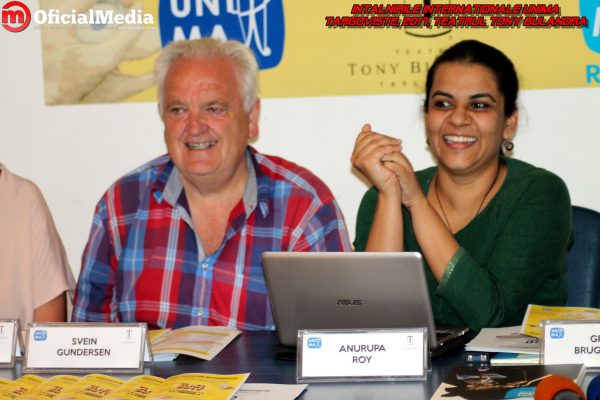
Être un marionnettiste professionnel implique – théoriquement et pratiquement – deux aspects déterminants: une formation spécialisée et être rémunéré pour pratiquer cet art. Qu’il soit traditionnel ou d’avant-garde, issu d’une période déterminée ou non, le théâtre d’animation se définit, non seulement par la structure de son expressivité scénique mais aussi selon le type de formation que reçoit le marionnettiste et selon le statut de celui-ci. La formation du marionnettiste requiert que l’on utilise AUJOURD’HUI des techniques d’HIER pour créer un FUTUR mythique! Une fois cette hypothèse acceptée, l’amélioration de la formation et un constant entraînement, deviennent des processus déterminants. Le mentor/formateur, lui, doit vivre avec ce paradoxe: il n’atteindra la notoriété que si ses disciples découvrent leur propre chemin; il les forme, les entraînant sur des voies qu’il a lui-même expérimentées. Les techniques utilisées pour la fabrication et l’interprétation avec la marionnette, maintenant très variées à cause du vaste éventail des pratiques, se situent entre ce que le marionnettiste a reçu durant sa formation et ce qu’il créera dans son parcours professionnel. Donc, l’avant-garde est véritablement une re-lecture, une réforme de la tradition. Ceci ne devient possible que si le marionnettiste admet qu’il ne s’agit pas de trahir les valeurs immuables de son art et de sa communauté artistique mais qu’il s’agit plutôt d’un veritable gain. Lier ses propres valeurs à celles d’un public précis est l’aspect qui détermine l’acceptation de l’inter conditionnement entre les valeurs du marionnettiste et son statut; un manque de congruence entre les deux pourrait générer du.. kitsch. L’art ne peut naître que d’une volonté de recherche, que de l’amélioration et du développement de la forme d’expression qui représente l’identité du marionnettiste en accord avec son esthétique propre et son degré de lucidité.
21h/21h30 – Débat
Modératrice/Moderator: Cristina GRAZIOLI
BIOGRAPHIES
Ana Crăciun-Lambru (Romania): Is a Romanian Puppeteer, Actress and Director. In Romania, she worked as a freelance puppeteer and actress since 2007. Her work included Commedia dell’Arte and Puppet Theatre Performances. She collaborated with dancers from the National Bucharest Opera in various contemporary dance productions. In 2013, she participated with her company, Uninvented Theatre, in the television contest Romania’s Got Talent and brought new ideas to the local puppetry scene.
In the United States Ana performed in Goblin Market (Connecticut Repertory Theatre) and in the The Puppetmaster of Lodz (Uconn Dramatic Arts Department). Other credits include: shadow master for Band of the Black Hand (CRT), puppeteer for L’enfant et les sortilèges, Noah’s Ark, and Hansel and Gretel (Uconn Opera), dancer and puppeteer for Gladys-A life of confinement (Ballard Theatre) and creator – performer for her Master of Fine Arts production Dust (CRT). Ana has a Bachelor of the Arts in Puppetry from the I.L. Caragiale Academy of Theatrical Arts and Cinematography in Bucharest, Romania. In 2016 she earned her Master of Fine Arts degree in the Puppet Arts Program at the University of Connecticut through a Fulbright Scholarship.
Ana Crăciun-Lambru (Roumanie): est une marionnettiste roumaine, actrice et metteur en scène. En Roumanie, elle a travaillé comme marionnettiste et actrice indépendante depuis 2007. Elle a pratiqué la commedia dell’Arte et le théâtre de marionnettes ; elle a également collaboré avec des danseurs de l’Opera National de Bucarest dans diverses productions de danse contemporaine. En 2013, elle a participé avec sa compagnie, Uninvented Theatre, à la manifestation Romania’s Got Talent et a apporté de nouvelles idées sur la scène de marionnettes locales. Aux États-Unis, Ana Craciun-Lambru a joué dans Goblin Market (Connecticut Repertory Theatre) et dans le Maître de marionnettes de Lodz (Uconn Dramatic Arts Department). Elle a également pratiqué le théâtre d’ombres pour Band of the black hand (CRT), la marionnette dans L’enfant et les sortilèges, Noah’s Ark et Hansel et Gretel (Uconn Opera). Elle a été danseuse et marionnettiste pour Gladys-A Life of Confinement (Ballard Theatre) et à la fois créatrice et interprète pour son Master of Fine Arts Dust Project (CRT). Elle est diplômée du Puppetry du I.L. Caragiale Academy of Arts and Cinematography à Bucarest, Roumanie. En 2016, elle a obtenu, grâce à une bourse Fulbright, un Master domaine Beaux arts dans le cursus Arts de la marionnette à l’Université du Connecticut.
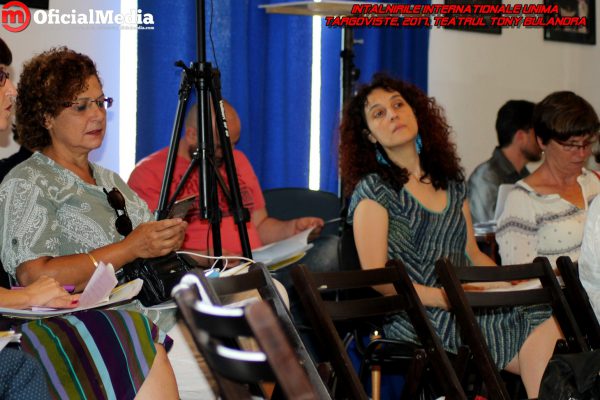
Marthe Adam (Canada): Puppeteer and director since 1978. Associate professor in puppet theatre at the École supérieure de théâtre of the Université du Québec à Montréal. She taught puppet theatre for over 35 years. Creator of several courses focusing on puppet theatre studies: Puppet theatre and puppet performance, Object and experimental puppet theatre, Interdisciplinary creation course, History of current trends in puppet theatre. Founder and Director of the Diploma of Specialized Studies in Contemporary Puppet Theatre (DESS), from 2005 to 2014. She holds a Master’s degree from the Higher Education Theatre School. The subject: Comparison between the performance of the puppeteer in traditional puppet theatre and the performance in the contemporary puppet theatre forms. (1991). Artistic Director of the International Festival of Puppetry in Jonquière, Quebec, from 1996 to 2002. Member of the Quebec Association of Puppeteers (AQM), of UNIMA Canada and the artistic committee of the Festival Casteliers.
Marthe Adam (Canada): Marionnettiste et metteure en scène depuis 1978. Professeure associée en théâtre de marionnettes à l’École supérieure de théâtre de l’Université du Québec à Montréal. Y enseigne la pratique du théâtre de marionnettes pendant plus de 35 ans. Créatrice de plusieurs cours axés sur l’apprentissage du théâtre de marionnettes : cours de Jeu et Interprétation avec la marionnette, cours de Théâtre d’Objet et de Marionnette Expérimentale, cours de Création interdisciplinaire, cours d’Histoire des Tendances actuelles du théâtre de marionnettes. Fondatrice et directrice du Diplôme d’études spécialisées en théâtre de marionnettes contemporain (DESS), de 2005 à 2014. Détentrice d’une maîtrise de l’École supérieure de théâtre dont le sujet est : Comparaison entre le jeu du marionnettiste dans les formes traditionnelles et le jeu du marionnettiste contemporain. (1991). Directrice artistique du Festival International de Marionnettes de Jonquière de 1996 à 2002. Membre de l’Association québécoise des marionnettistes (AQM), de l’UNIMA Canada et du comité artistique du Festival Casteliers.
Greta Bruggeman (France): Originally from Belgium and after having trained at the International Puppet Institute of Charleville-Mézières, she creates with Sylvie Osman, in 1984, the company Arketal. After the completion of their first creation, she began a long personal journey dedicating all her energy and availability to the service of the design and construction of puppets and their stage space. The plastic arts continue to nourish through its research. Many artists – painters, draughtsman and sculptors – have thus provided valuable aesthetic support: Théo Tobiasse, Fernand Léger, Marius Rech, Rolf Ball, Martin Jarrie, Makhi Xenakis, Wozniak, Frédéric Lanovsky, and others. From the creation and development of links between the imaginary world of these artists and the puppet theater, a singular aesthetic language was born. It is in a spirit both artistic and artisanal that she has been studying, for thirty years, the object – the puppet, this fascinating “material to life” whose manufacture is not improvised.
Greta Bruggeman (France): Descendue de Belgique et après s’être formée à l’Institut International de la Marionnette de Charleville-Mézières, elle crée avec Sylvie Osman, en 1984, la compagnie Arketal. Après la réalisation de leur première création, elle abandonne le jeu pour entamer un long parcours personnel mettant toute son énergie et sa disponibilité au service de la conception et de la construction des marionnettes et de leur espace scénique. Les arts plastiques n’ont depuis cessé de nourrir ses recherches. De nombreux artistes – peintres, dessinateurs ou sculpteurs – lui ont ainsi apporté un précieux appui esthétique: Théo Tobiasse, Fernand Léger, Marius Rech, Rolf Ball, Martin Jarrie, Mâkhi Xenakis, Wozniak, Frédéric Lanovsky, etc. De la création et du développement de liens entre les imaginaires de ces artistes et le théâtre de marionnettes est né un langage esthétique singulier. C’est dans un esprit à la fois artistique et artisan qu’elle étudie, depuis trente ans, l’objet – marionnette, cette « matière à vivre » fascinante dont la fabrication ne s’improvise pas.
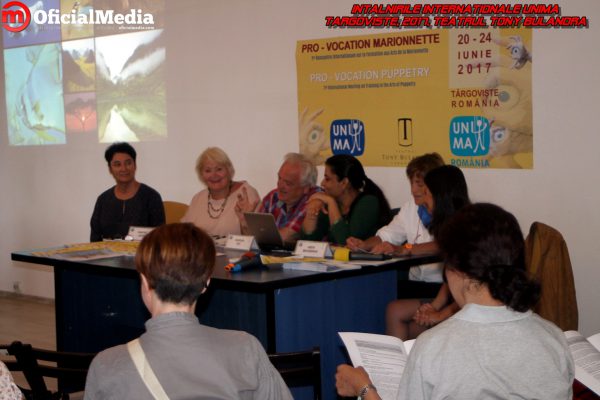
Anurupa Roy (India): Master’s Degree in History of Lady Shriram College, South Campus, University of Delhi, Diploma in Puppet Theatre of the DI (Dramatiska Institute of Film, T.V., Drama and Radio) Stockholm University, Sweden. The puppet theatre department was led by Michael Meschke. Director of Katkatha – see www.katkatha.org and You Tube. 2016 – staging of the MAHABHARATA . Other projects: Collaboration with the companies Tas de Sable and Ches Panses Vertes for the WWI project in Amiens and with the WWI Museum in Perrone in 2013-2014 and 2017-2018. Fellowships: Fellowship to create the Mahabharata in co-production with the World Festival of Puppet Theatres of Charleville-Mézières; Grant of the Indian Foundation for Research and Documentation, 2013-2015, with the aim of enabling the realization of two master classes, one from the Karnataka tradition, the Togalu Gombayatta, leather shadow puppets; the other from the Katputli of Rajasthan. These master classes began with the following question: how to transmit traditional forms to non-traditional artists and how this transmission contributes to create mixes between traditional and contemporary forms. International Collaborations: 2015 – FIDENA- International Festival of Figuren Teater, Germany.
Anurupa Roy (Inde): Maîtrise en Histoire du Collège Lady Shriram, Campus sud, de l’Université de Delhi, Diplôme en théâtre de marionnettes de DI (Dramatiska Institutet du Film, T.V., Art dramatique et Radio) de l’Université de Stockholm, en Suède. Le département du théâtre de marionnettes étant dirigé par Michael Meschke. Metteure en scène (www.katkatha.org) et You Tube. 2016 – mise en scène du MAHABHARATA. Collaboration avec les compagnies Le Tas de Sable et Ches Panses Vertes pour le projet WWI à Amiens et avec le Musée WWI à Perrone pour les années 2013-2014 et 2017-2018. Bourse de co-production avec le Festival Mondial des Théâtres de Marionnettes de Charleville-Mézières pour créer le Mahabharata. Bourse de la Fondation Indienne pour la Recherche et la Documentation, 2013-2015, dans le but de permettre la réalisation de deux classes de maître, l’une de la tradition du Karnataka, le Togalu Gombayatta, marionnettes d’ombres en cuir ; l’autre du Katputli du Rajasthan. Ces classes de maître ont démarré à partir de la question suivante : Comment transmettre les formes traditionnelles à des artistes non traditionnels et comment cette transmission contribue à créer des mixités entre formes traditionnelles et contemporaines. Collaborations internationales: 2015 – FIDENA- Festival International de Figurin Teater, Allemagne.
Karen Høie (Norway), is an actor/puppeteer, and parallel with her artistic work, she has, during the years been a teacher of drama and theatre, teaching both children, youth and grown-ups. She is an associated professor in drama and theatre, and has given lessons at different University Colleges in Norway. She was the administrative leader of Norwegian side for the project “HraMoKa”.
Karen Hoie (Norvège), est une actrice marionnettiste. Pendant de nombreuses années elle enseigne le théâtre et la dramaturgie à des enfants, des adolescents et des adultes. Professeure associée, elle offre des formations dans diverses universités de la Norvège. Elle dirige le projet norvégien « HraMoKa ».
Svein Gundersen (Norway): Born 9th of March 1946 in Molde, Norway. Professor of Drama and Theater at Oslo and Akershus University college. Theatre Director, and member of the Writers Guild of Norway (NDF). Running his own Company: Kulturprod.
Svein Gundersen (Norvège): Né le 9 Mars 1946 a Molde, en Norvège. Professeur de Theater à Oslo et au Akershus University College. Metteur en scène et membre de la Guilde des auteurs de la Norvège. (NDF). Directeur de la compagnie nommée Kulturprod.
Kateřina Lešková Dolenská (Czech Republic): Graduate of the Faculty of Arts of Charles University in Prague (Theatre Studies) and PhD studies at the Academy of Performing Arts in Prague. Her specialization is history of the Czech and world puppet theatre. Since 2006, she has been a member of the editorial board of the magazine Loutkář (Puppeteer). In 2015, she became the youngest editor-in-chief in the magazine’s history (established 1912). She collaborates with many cultural periodics and with the national broadcaster Český rozhlas (Czech Radio), takes part in conferences, and participates on publishing books about puppetry. Since 2012, she is teaching History of puppetry at the Academy of Performing Arts in Prague.
Kateřina Lešková Dolenská (République Tchèque): Diplômée de la Faculté des arts de l’Université Charles à Prague – études théâtrales et doctorat. Elle est spécialiste de l’histoire du théâtre de marionnettes tchèque et mondial. Depuis 2006, elle est membre du comité de rédaction de la revue Loutkář (Le marionnettiste), devenant en 2015 la plus jeune rédactrice en chef de l’histoire de cette publication (créé en 1912). Elle collabore à de nombreux périodiques culturels et à la radio tchèque nationale: Český rozhlas. Elle participe à des conférences et contribute à la publication d’ouvrages sur les marionnettes. Depuis 2012, elle enseigne l’histoire de la marionnette à l’Académie des Arts du Spectacle de Prague.
Anca-Doina Ciobotaru (Romania): Associate Professor, Dr. habil, at the George Enescu National University of Arts in Iaşi, head of the Theatre Department, editor-in-chief of the magazine “Theatrical Colloquia”. Actor – puppeteer, creative producer of children and youth theatre performances, author of numerous books and studies on the history and aesthetics of puppet and animation theatre, the usage of theatrical techniques in education, communication, or conflict management, which have been presented at conferences or published in specialized magazines. She has also held many workshops on applying theatre techniques in varied contexts. Involved in socio-cultural life, the president of Art Civica Association – Iaşi currently develops projects through the Centre for Creation, Continuous Non-formal Education and Personal Development, running programs for training (verbal and non-verbal) communication, speech techniques, Mastermind, as well a s profile-specific workshops.
Anca-Doina Ciobotaru: est professeur associé à l’Université Nationale des Arts George Enescu, à Iasi, directrice du Départment de Théâtre, éditrice en chef de la revue “Theatrical Colloquia”. Comédienne-marionnettiste, elle produit des spectacles pour l’enfance et la jeunesse. Elle est également l’auteur de nombreux livres et études sur l’histoire et l’esthétique du théâtre d’animation, sur l’utilisation de techniques théâtrales en éducation, en communication et en gestion de conflits. Ses textes ont été présentés lors de conférences ou publiés dans des revues spécialisées. Elle offre également de nombreux ateliers sur l’application de techniques théâtrales à divers domaines. Présidente du Art Civica Association à Iasi et impliquée dans le développement socio culturel de cette même ville, elle initie de nombreux projets au Center for Creation: Éducation continue et développement personnel, direction de programmes sur la formation à la communication verbale et non verbale et aux techniques de la parole.
Cristina Grazioli (Italy) is a professor of History of Theater and of the Performaning Arts as well as History and Aesthetics of stage lighting at the University of Padua. The lines of investigation of her research focus on the relationship between theatre and the visual arts, German drama in the beginning of the 20th century, the Aesthetics of the Puppet, and Lighting in theatre. Among her publications: Lo specchio grottesco. Marionette e automi sulla scena tedesca del primo ‘900 (Esedra, 1999), Luce e ombra. Storia, teorie e pratiche dell’illuminazione teatrale (Laterza, 2008); the Italian editions of the writings on the theater of Rainer Maria Rilke (Genova, 1995), the authors of German Expressionism (Genova, 1996); the studies on the functions and the staging of Bernhard Diebold and Hans Doerry (Firenze, 2002 and 2006). She was a co-editor with Didier Plassard of the 20th issue of the magazine Puck (Human-Non-human, 2014). Several of her publications are devoted to the subject of lighting. She is currently preparing a book devoted to Rilke and the theater. She is a member of the International Scientific Committee of the Revue d’Histoire du Théâtre. In 2009/2010 she was a Visiting Professor at the Department of Theater Studies in Paris 3-Sorbonne Nouvelle, in 2015 in Unirio (Rio de Janeiro, BR), in 2016 at the Paul Valéry University in Montpellier (Seminair); in all these functions she was in charge of courses on lighting, light, and shadow.
Cristina Grazioli (Italie): est Professeur à l’Université de Padoue (I), où elle enseigne l’Histoire du théâtre et du Spectacle et l’Histoire et Esthétique de la lumière au théâtre. Les axes de ses recherches portent sur le théâtre allemand entre XIX et XX siècle ; sur les poétiques de la Marionnette ; sur l’histoire et les conceptions de la lumière, l’éclairage de scène et ses implications dramaturgiques à travers les siècles et jusqu’à nos jours.
Parmi ses publications: Lo specchio grottesco. Marionette e automi sulla scena tedesca del primo ‘900 (Esedra, 1999), Luce e ombra. Storia, teorie e pratiche dell’illuminazione teatrale (Laterza, 2008); les éditions italiennes des écrits sur le théâtre de Rainer Maria Rilke (Genova, 1995), des auteurs de l’Expressionnisme allemand (Genova, 1996), des études sur les emplois et la mise en scène de Bernhard Diebold et de Hans Doerry (Firenze, 2002 et 2006). Elle a été corédactrice avec Didier Plassard du numéro 20 de la revue Puck (Humain-Non humain, 2014). Plusieurs de ses publications sont consacrées au sujet de la lumière. Elle prépare en ce moment un ouvrage consacré à Rilke et le théâtre. Elle fait partie du Comité Scientifique International de la Revue d’Histoire du Théâtre. En 2009/2010, elle a été Professeur invité au Département d’études théâtrales à Paris 3-Sorbonne Nouvelle, en 2015 à Unirio (Rio de Janeiro, BR), en 2016 à l’Université Paul Valéry de Montpellier (Séminaire) ; dans tous ces cas elle a été chargée des cours sur l’éclairage, la lumière, l’ombre.
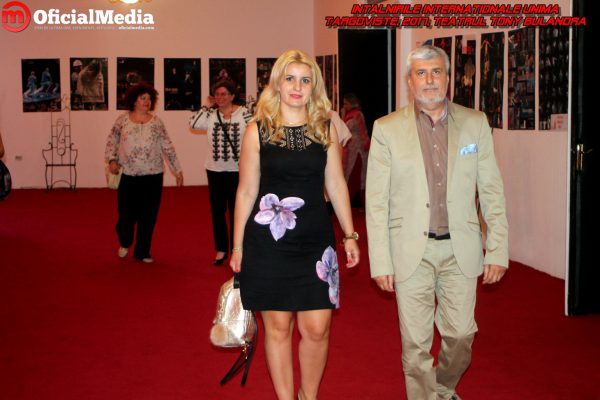


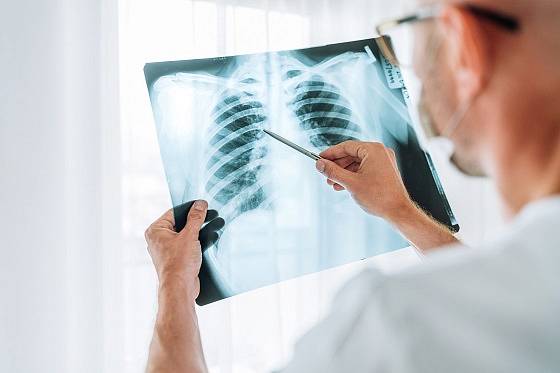
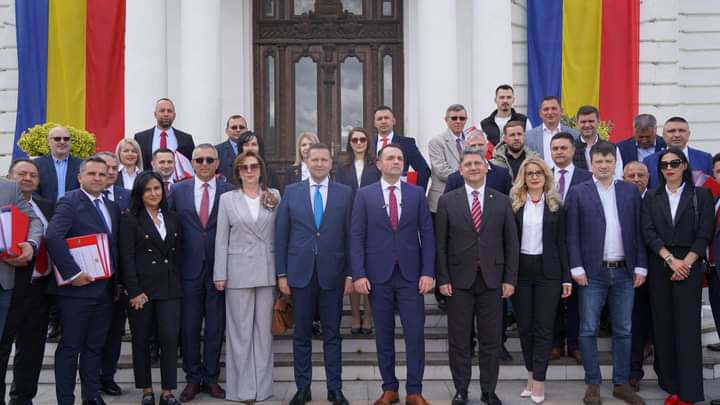

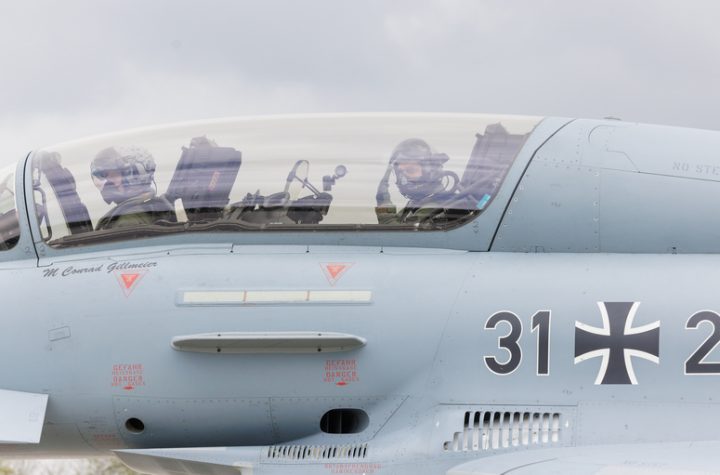
Te ajutam sa faci bagajul!
URMARITI OFICIAL MEDIA PE CANALELE NOASTRE
AUTORII OFICIAL MEDIA
De ce ne sperie o VIATA NOUA? - Oana Grigore
Ce mai poti citi
Cristian Stan și-a depus candidatura pentru un nou mandat de primar al municipiului Târgoviște cu peste 30.000 de semnături
Șeful NATO la manșa unui EUROFIGHTER german
Apă, soare, natură și un mediu sănătos pentru VIAȚĂ